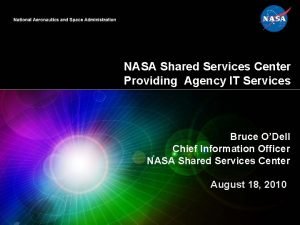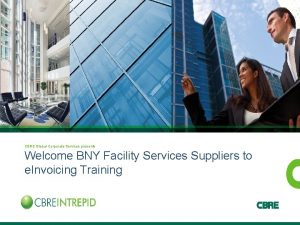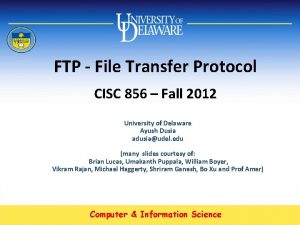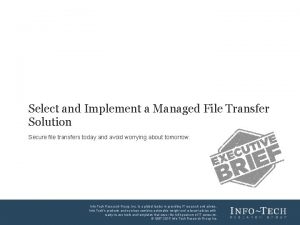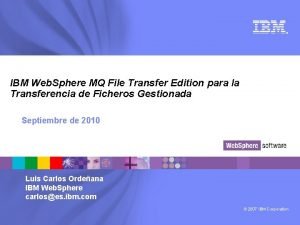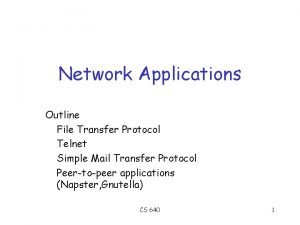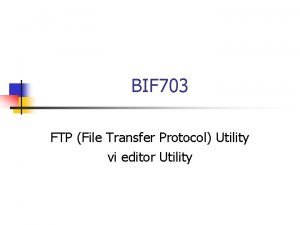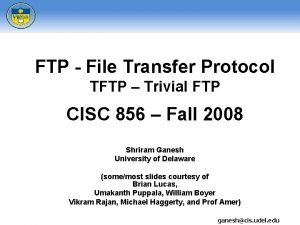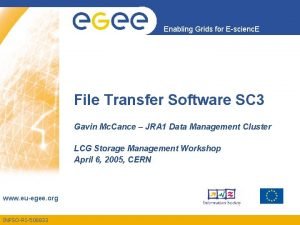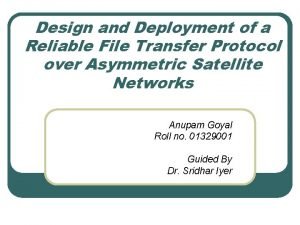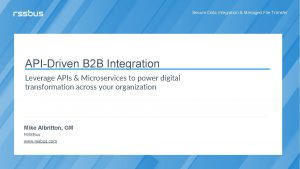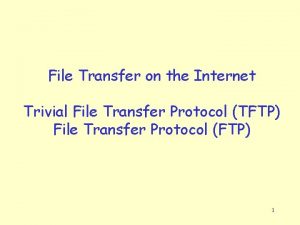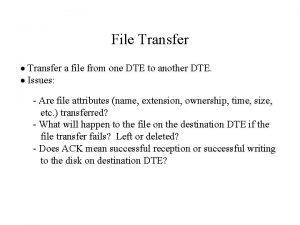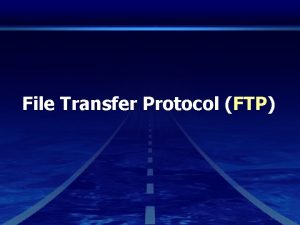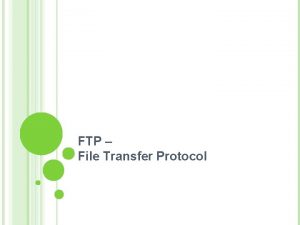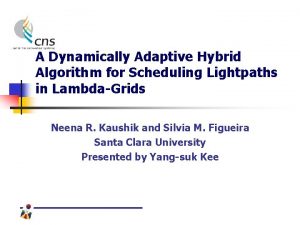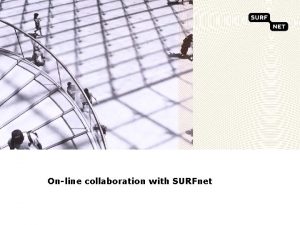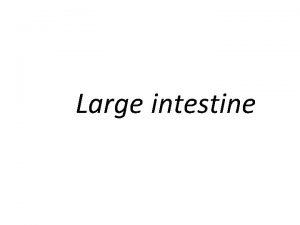End to end lightpaths for large file transfer


















- Slides: 18

End to end lightpaths for large file transfer over fast long-distance networks Jan 29, 2003 Bill St. Arnaud, Wade Hong, Geoff Hayward, Corrie Cost, Bryan Caron, Steve Mac. Donald

Problem 1. TCP throughput over long fat pipes very susceptible to packet loss, MTU, TCP kernel, Buffer memory, AQM optimized for commodity Internet, etc 2. Packet loss can result from congestion, but also underlying BER – achieve a gigabit per second with TCP on a coast-to-coast path (rtt = 40 msec), with 1500 byte packets, the loss rate can not exceed 8. 5 x 10^-8 packets – “End to end” BER for optical networks 10^-12 to 10^-15 which means packet loss rate of approximately 10^-8 to 10^-11 – The bigger the packet the greater the loss rate!!! 3. Cost of routers significantly greater than switches for 10 Gbps and higher (particularly for large number of lambdas) 4. Lots of challenges maintaining consistent router performance across multiple independent managed networks – MTU, auto-negotiating Ethernet, insufficient buffer memory 5. Require consistent and similar throughput for multiple sites to maintain coherency for grids and SANs and new “space” storage networks using erasure codes e. g. Oceanstore 6. For maximum throughput OS and kernel bypass may be required 7. Many commercial SAN/Grid products will only work with Qo. S network

Possible Solutions 1. 2. 3. For point to point large file transfer a number of possible techniques such as FAST, XCP, parallel TCP, UDP, etc – Very scalable and allows same process to be used for all sorts of file transfer from large to small – But will it address other link problems? Datagram Qo. S is a possibility to guarantee bandwidth – But requires costly routers and no proven approach across independent managed networks (or campus) – Does not solve problem of MTU, link problems, etc E 2 E lightpaths - all solutions are possible – Allows new TCP and non TCP file transfers – Allows parallel TCP with consistent skew on data striping – Allows protocols that support OS bypass, etc – Guarantees consistent throughput for distributed coherence and enables news concepts of storing large data sets in “space” – Uses much lower cost switches and bypasses routers

What are E 2 E lightpaths? > > Customer controlled E 2 E lightpaths are not about optical networking – E 2 E lightpaths do not use GMPLS or ASON The power of the Internet was that an overlay packet network controlled by end user and ISPs could be built on top of telco switched network – CA*net 4 is an optical overlay network on top of telco optical network where switching is controlled by end users More akin to MAE-E “peermaker” but at a finer granularity – “Do you have an e 2 e lightpath for file transfer terminating at a given IX? Are you interested in peering with my e 2 e lightpath to enable big file transfer? ” – Lightpath may be only from border router to border router With OBGP can establish new BGP path that bypasses most (if not all) routers – Allows lower cost remote peering and transit – Allows e 2 e lightpaths for big file transfer

e 2 e Lightpaths x. x. x. 1 Normal IP/BGP path y. y. y. 1 Optical “Peermaker” Only y. y. y. 1 advertised to x. x. x. 1 via OBGP path Application or end user controls peering of BGP optical paths for transfer of elephants!!! OBGP path Only x. x. x. 1 advertised to y. y. y. 1 via OBGP path

CA*net 4 Edmonton Saskatoon Vancouver Calgary Kamloops Winnipeg Regina Halifax Thunder Bay Victoria Quebec City Sudbury Seattle Montreal Ottawa Minneapolis CA*net 4 Node Possible Future Breakout Possible Future link or Option Charlottetown Fredericton Toronto London Kingston Buffalo Hamilton Windsor Albany Chicago New York CA*net 4 OC 192 St. John's Boston Halifax

CA*net 4 Architecture Principles > A network of point to point condominium wavelengths – > > > Do not confuse with traditional optical solutions like GMPLS or ASON Grid service architecture for user control and management of e 2 e lightpaths – Uses OGSA and Jini/Java. Spaces for end to end customer control Owners of wavelengths determine topology and routing of their particular light paths All wavelengths terminate at mini-IXs where owner can – add/drop STS channel or wavelength – cross connect to another condominium owner’s STS channels or wavelengths – Web serviced enabled “peermaker” Condominium owner can recursively sub partition their wavelengths and give ownership to other entities Wavelengths become objects complete with polymorphism, inheritance, classes, etc

So what did we do? > > > Demonstrate a manually provisioned “e 2 e” lightpath Transfer 1 TB of ATLAS MC data generated in Canada from TRIUMF to CERN – 17, 000 km -9600 byte MTU 10 Gbe NIC cards on servers Demonstrated a number of techniques for large file transfer including bbftp and tsunami Demonstrated wide area SAN using un-modified “out of the box” parallel TCP with bidirectional data rates of 5 to 6 Gbps

Comparative Results (TRIUMF to CERN) Transfer Program Transferred Average Max Avg PBMPS wuftp 100 Mb. E (1500 byte MTU) 600 MB 3. 4 Mbps . 0578 wuftp 10 Gb. E 6442 MB 71 Mbps 1. 207 Iperf (10 streams) 275 MB 940 Mbps Pftp (germany) 600 MB 532 Mbps bbftp (10 streams) 1. 4 TB 666 Mbps 710 Mbps 12. 07 Tsunami - disk to disk 0. 5 TB 700 Mbps 825 Mbps 14. 025 Tusnami - disk to memory 12 GB >1. 024 Gbps 1136 Mbps 19. 312 9. 044 17. 408

TRIUMF to CERN Topology

Exceeding 1 Gbit/sec … ( using tsunami)

Lessons Learned - 1 > 10 Gb. E appears to be plug and play > channel bonding of two Gb. Es seems to work very well (on an unshared link!) > Linux software RAID faster than most conventional SCSI and IDE hardware RAID > more disk spindles is better – distributed across multiple controllers and I/O bridges > the larger files the better for thruput > very lucky, no hardware failures (50 drives)

Lessons Learned - 2 > unless programs are multi-threaded or the kernel permits process locking, dual CPUs will not give best performance – single 2. 8 GHz likely to outperform dual 2. 0 GHz, for a single purpose machine like our fileserver > more memory is better > concatenating, compressing and deleting files takes longer than transferring > never quote numbers when asked : )

Yotta “Optic Boom” > Uses parallel TCP with data stripping > Each TCP channel assigned to a given e 2 e lightpath > Allows for consistent skew on data stripping > Allows for consistent throughput and coherence for geographic distributed SANs > Allows synchronization of data sets across multiple servers ultimately leading to “space” storage

OTTAWA VANCOUVER 8 x GE @ OC-12 (622 Mb/s) CHICAGO 1 x GE loop -back on OC-24 Sustained Throughput ~11. 1 Gbps Ave. Utilization = 93%

Local Configuration

What Next? > continue testing 10 Gb. E – try the next iteration of the Intel 10 Gb. E cards in back to back mode – bond multiple Gb. Es across CA*net 4 > try aggregating multiple sources to fill a 10 Gbps pipe across CA*net 4 > setup a multiple Gb. E testbed across CA*net 4 and beyond > drive much more than 1 Gbps from a single host

Further Investigations > Linux TCP/IP Network Stack Performance – Efficient copy routines (zero copy, copy routines, read copy update) > Stream Control Transmission Protocol > Scheduled Transfer Protocol – OS bypass and zero copy – RDMA over IP > Web 100, Net 100, DRS
 Nasa nomad large file transfer
Nasa nomad large file transfer File-file yang dibuat oleh user pada jenis file di linux
File-file yang dibuat oleh user pada jenis file di linux Distributed file system
Distributed file system An html file is a text file containing small markup tags.
An html file is a text file containing small markup tags. Physical image vs logical image
Physical image vs logical image In a file-oriented information system, a transaction file
In a file-oriented information system, a transaction file Fungsi sistem file
Fungsi sistem file Ftp cbre
Ftp cbre Cozyroc file transfer task
Cozyroc file transfer task Purpose of ftp protocol
Purpose of ftp protocol Market overview managed file transfer solutions
Market overview managed file transfer solutions Arquitectura de software
Arquitectura de software File transfer telnet
File transfer telnet Bif file transfer
Bif file transfer Newforma field reports app
Newforma field reports app Ftp and tcp/ip
Ftp and tcp/ip E file transfer
E file transfer Reliable file transfer
Reliable file transfer What is api led architecture
What is api led architecture
